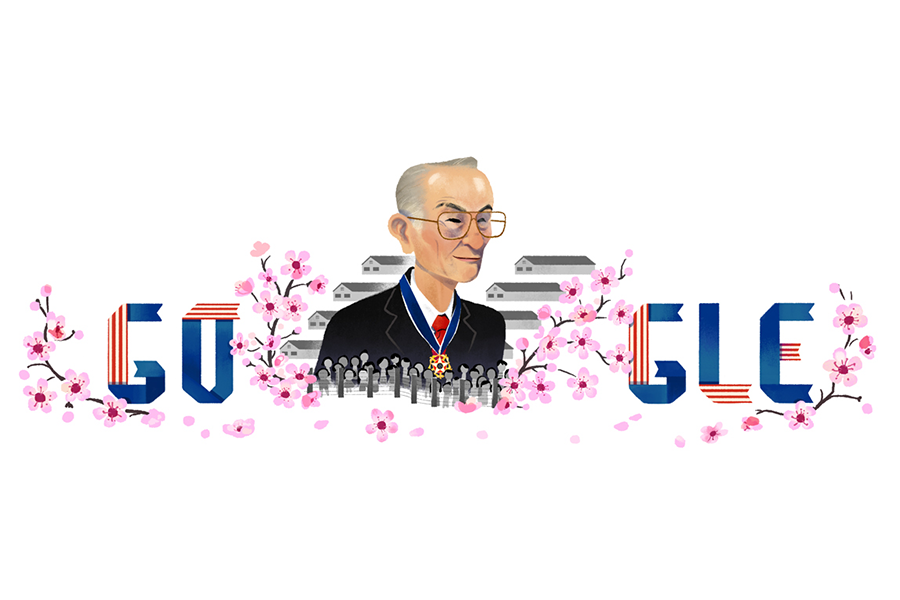Google honors Fred Korematsu, who battled Japanese-American internment
Loading...
Monday marks what would be the 98th birthday of civil rights activist Fred Toyosaburo Korematsu, whose portrait is featured in the Google Doodle of the day.
Mr. Korematsu, a native of Oakland, Calif., was known for his opposition to Japanese-American internment camps in the United States during World War II. Instead of voluntarily relocating to an internment camp in 1942, when Executive Order 9066 was signed by President Franklin Delano Roosevelt, Korematsu went into hiding and was consequently arrested.
After Korematsu's conviction was upheld in the US Supreme Court case Korematsu v. United States, he and his family were sent to live in a Utah relocation camp until the end of the war in 1945. In 1983, his conviction was overturned, and in 1998, he received the Presidential Medal of Freedom, the nation’s highest civilian honor, from President Clinton.
President Ford formally ended Executive Order 9066 in 1976 and apologized for the internment, stating: "We now know what we should have known then – not only was that evacuation wrong but Japanese-Americans were and are loyal Americans."
But the kind of fear that gave rise to the creation of internment camps is not so easily ended, as Curtis Sitomer wrote for The Christian Science Monitor in 1983, before Korematsu's conviction was overturned. More than 30 years later, his words still feel relevant, particularly as some have drawn comparisons between World War II-era fear of Japanese Americans and the current debate over Muslim immigration amid concerns about terrorism:
Regardless of the court's final ruling, there's the unfinished business of combating racism in America. Its ugly head popped up 40 years ago in the flurry over Japanese-Americans. Since then it has shown itself repeatedly - during the Iranian hostage crisis, for instance, when some observers suggested that Iranian-Americans be taken into custody in retribution for the acts against Americans in Iran, and today in disputes regarding the rights of blacks and Mexican-Americans.
Arguments of the 1940s sound uncannily current: you can't tell a Japanese-American from a Japanese national; in a crisis, they're sure to be loyal to their ethnic roots; surely some Japanese-Americans are part of spy networks transmitting US security data to Tokyo...
Could these events recur today? Unfortunately, yes. People who look ''different'' are still potential targets. It's just too easy - on the flimsiest of evidence - to stereotype groups or identify individuals with political movements and regimes.
Concerns about potential discriminatory treatment of Muslims in America under the Trump administration mounted throughout the president's campaign, as he and members of his team called for measures including a ban on all Muslims entering the country and a national registry for immigrants from countries containing active terrorist groups. Last week, an executive order signed by President Trump temporarily banned all citizens of seven majority-Muslim countries from entering the US, sparking a wave of protests.
While Mr. Trump has denied advocating for a religion-based registry, prominent Trump supporter Carl Higbie came under fire in November after citing World War II-era Japanese-American internment camps as a "precedent" for an immigrant registry, telling Fox News anchor Megyn Kelly: "We’ve done it based on race, we’ve done it based on religion, we’ve done it based on region. We've done it with Iran back – back a while ago. We did it during World War II with Japanese."
When pressed by Ms. Kelly, Mr. Higbie said he was not advocating for a return to internment camps, but that "we need to protect America first."
In December 2015, then-presidential candidate Trump told Time that he did not know whether he would have supported the internment of Japanese Americans in the 1940s.
"I would have had to be there at the time to tell you, to give you a proper answer," he said. "I certainly hate the concept of it. But I would have had to be there at the time to give you a proper answer."








